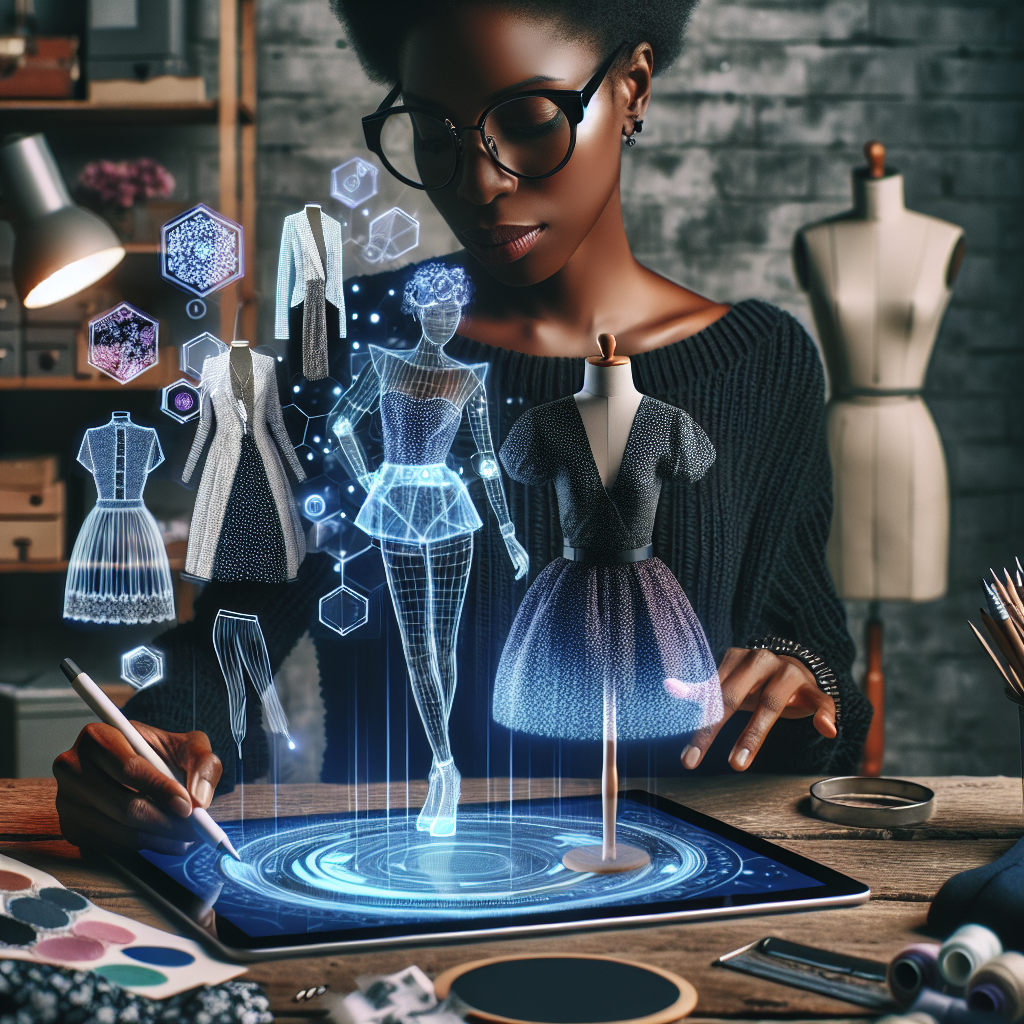Revolutionizing Fashion: The Benefits of Augmented Reality in Design
In today’s fast-paced world, technology plays an increasingly crucial role in almost every aspect of our lives. From smartphones to social media, to artificial intelligence, technology is constantly evolving and shaping the way we live, work, and interact with the world around us. In the fashion industry, this technological revolution is no different. One of the most exciting advancements in recent years is the use of augmented reality (AR) in design. Augmented reality has the power to revolutionize the way we experience and engage with fashion, offering a whole new level of creativity, innovation, and versatility. In this article, we will explore the benefits of augmented reality in fashion design and how it is reshaping the industry as we know it.
What is Augmented Reality?
Augmented reality is a technology that superimposes digital information onto the real world, creating an interactive, immersive experience for users. Unlike virtual reality, which completely immerses users in a digital environment, augmented reality overlays digital content onto the physical world, allowing users to interact with and manipulate virtual objects in real-time. AR applications can be accessed through smartphones, tablets, smart glasses, and other devices, making it accessible and user-friendly for a wide range of consumers.
The Benefits of Augmented Reality in Fashion Design
1. Enhanced Product Visualization
Augmented reality in fashion design allows consumers to visualize and interact with clothing and accessories in a whole new way. By using AR apps or devices, users can try on virtual garments, experiment with different styles and colors, and mix and match outfits in real-time. This not only improves the shopping experience but also helps consumers make more informed purchasing decisions, leading to higher customer satisfaction and reduced returns.
2. Personalized Shopping Experience
Augmented reality technology enables fashion brands to offer personalized shopping experiences to their customers. By collecting data on consumers’ preferences, sizes, and style choices, brands can create customized AR experiences that cater to individual tastes and needs. This level of personalization not only increases customer engagement but also fosters brand loyalty and drives repeat business.
3. Increased Engagement and Interactivity
Augmented reality in fashion design brings a new level of interactivity and engagement to fashion marketing and advertising campaigns. Brands can create AR experiences that allow users to virtually try on products, watch virtual fashion shows, and participate in interactive storytelling experiences. This not only captivates consumers’ attention but also encourages them to share their experiences with others, creating a buzz around the brand and driving brand awareness and sales.
4. Cost-Effective Design and Prototyping
Augmented reality technology streamlines the fashion design process by allowing designers to create virtual prototypes of garments and accessories before they are physically produced. This not only saves time and resources but also enables designers to experiment with different designs, materials, and patterns in a risk-free environment. By using AR technology to iterate and refine their designs, fashion brands can bring innovative and high-quality products to market faster and more efficiently.
5. Sustainability and Eco-Friendly Practices
Augmented reality in fashion design promotes sustainability and eco-friendly practices by reducing the need for physical samples and prototypes. By using virtual prototypes and digital assets, fashion brands can minimize waste, energy consumption, and carbon emissions associated with traditional design and manufacturing processes. This not only benefits the environment but also aligns with consumers’ growing demand for sustainable and ethical products.
FAQs
Q: How can augmented reality enhance the in-store shopping experience?
A: Augmented reality can enhance the in-store shopping experience by allowing consumers to virtually try on clothing and accessories, access product information, and receive personalized recommendations in real-time. This not only improves customer engagement but also enables brands to provide a more interactive and immersive shopping experience.
Q: Is augmented reality only for high-end fashion brands?
A: No, augmented reality technology is becoming increasingly accessible and affordable for fashion brands of all sizes and budgets. Whether you are a luxury label or a small independent designer, you can leverage AR technology to enhance your brand’s visibility, engage with customers, and drive sales.
Q: How can consumers access augmented reality experiences?
A: Consumers can access augmented reality experiences through AR apps on smartphones and tablets, as well as through smart glasses and other AR-enabled devices. Brands can also incorporate AR technology into their websites, social media platforms, and marketing campaigns to reach a wider audience and drive engagement.
In conclusion, augmented reality is revolutionizing the fashion industry by providing a whole new level of creativity, innovation, and versatility to designers, brands, and consumers alike. From enhanced product visualization and personalized shopping experiences to increased engagement and interactivity, AR technology offers a wide range of benefits that are reshaping the way we experience and interact with fashion. By leveraging the power of augmented reality in design, fashion brands can stay ahead of the curve, drive brand loyalty, and create unforgettable experiences for their customers.
